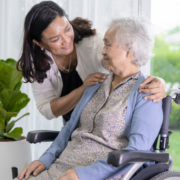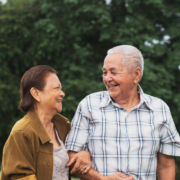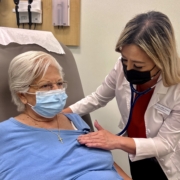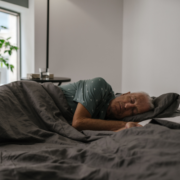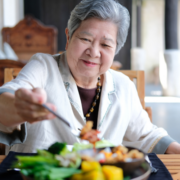Tips for Caregivers: Balancing Responsibilities and Self-Care
Being a caregiver is one of the most rewarding roles, but it can also be hard work. When you’re taking care of someone else, it’s easy to forget to look after yourself. However, balancing your caregiving responsibilities with self-care is essential for your health and well-being. This guide offers helpful tips to caregivers so they can provide the best care while taking care of themselves too.
Why Self-Care Matters for Caregivers
Being a caregiver requires time, energy, and patience. Without self-care, it’s easy to feel overwhelmed or even burned out. When you take care of yourself, you’ll have more energy, a clearer mind, and the ability to provide better care for your loved one. Remember, taking time for yourself isn’t selfish; it’s necessary!
Signs You Might Need More Self-Care
Some caregivers may not notice when they’re neglecting their own needs. Watch for these signs that you may need a break:
- Feeling tired all the time
- Losing interest in things you usually enjoy
- Becoming easily frustrated or irritable
- Experiencing trouble sleeping
- Feeling stressed or anxious most of the day
If any of these sound familiar, it’s time to focus on yourself.
Tips for Balancing Caregiving and Self-Care
Here are some practical tips that can help caregivers find balance and avoid burnout.
1. Set Realistic Goals
You can’t do everything on your own, and that’s okay. Focus on what’s most important and don’t be afraid to ask for help. Set small, manageable goals each day to avoid feeling overwhelmed.
- Example: Instead of trying to clean the whole house, aim to clean one room at a time.
2. Take Breaks Regularly
Even short breaks can make a big difference. Step outside for fresh air or enjoy a relaxing cup of tea. These small moments can recharge your energy and clear your mind.
- Tip: Schedule regular breaks during the day, even if it’s just 5-10 minutes.
3. Build a Support System
You don’t have to do it all alone. Lean on friends, family, or local caregiving resources. Talking to someone who understands can provide emotional relief and practical advice.
- Tip: Check out local support groups or caregiver networks for connections.
4. Prioritize Your Health
Taking care of your body is just as important as providing care for someone else. Eat healthy meals, drink plenty of water, and make time for exercise. Regular physical activity can boost your energy and improve your mood.
- Example: Go for a 20-minute walk each day to keep active.
5. Don’t Skip Your Own Medical Appointments
It’s easy to put your own health at the bottom of the list. However, routine checkups and screenings are essential to staying healthy and strong enough to care for others.
- Tip: Make a calendar reminder for your appointments so you don’t forget.
6. Learn to Say No
It’s okay to set boundaries. If someone asks for something you can’t handle right now, it’s okay to say no. Protecting your energy allows you to focus on what matters most.
- Tip: Practice saying, “I can’t right now, but let me help you find someone who can.”
7. Take Time for Things You Enjoy
Hobbies and time spent doing things you love can bring you joy and reduce stress. Whether it’s reading, gardening, or painting, these activities give your mind a break.
- Tip: Schedule at least one hour a week to enjoy a favorite hobby.
Using Available Resources
Many organizations and programs exist to help caregivers. These resources can lighten your load and provide additional support.
Respite Care
Respite care gives you temporary relief by providing professional care for your loved one. This could be for a few hours, a whole day, or longer if needed.
Community Services
Look into meal delivery programs, adult day care centers, and transportation services. These options can save time and reduce stress.
Joining a Caregiver Program
Programs like PACE (Program of All-Inclusive Care for the Elderly) offer coordinated support for seniors and their families. PACE services help caregivers by ensuring their loved ones receive comprehensive care.
How Caring for Yourself Helps Everyone
When you take time to care for yourself, you’re not just helping yourself. You’re also ensuring that your loved one gets the best care possible. A healthy, well-rested caregiver can provide better support and enjoy a stronger connection with those they care for.
Start Taking Care of Yourself Today
Caregiving is a meaningful role, but it doesn’t have to come at the cost of your well-being. Balancing your responsibilities with self-care will not only make you feel better but will help you provide better care, too. Start with small steps, ask for support, and remember that looking after yourself is just as important as caring for your loved one.
This blog is for informational purposes only and is not intended as professional advice. Always consult a qualified healthcare provider or specialist for specific questions or concerns.
It’s your life. Live it your way.
WelbeHealth provides full-service healthcare and personalized support to help your loved ones age well at home and in your community. Our Program of All-Inclusive Care for the Elderly (PACE) meets the changing needs of seniors, often at no cost, while helping you navigate life as a caregiver. To see if you qualify, call: (888) 750-0248 | TTY 711 or visit: welbehealth.com/contact

